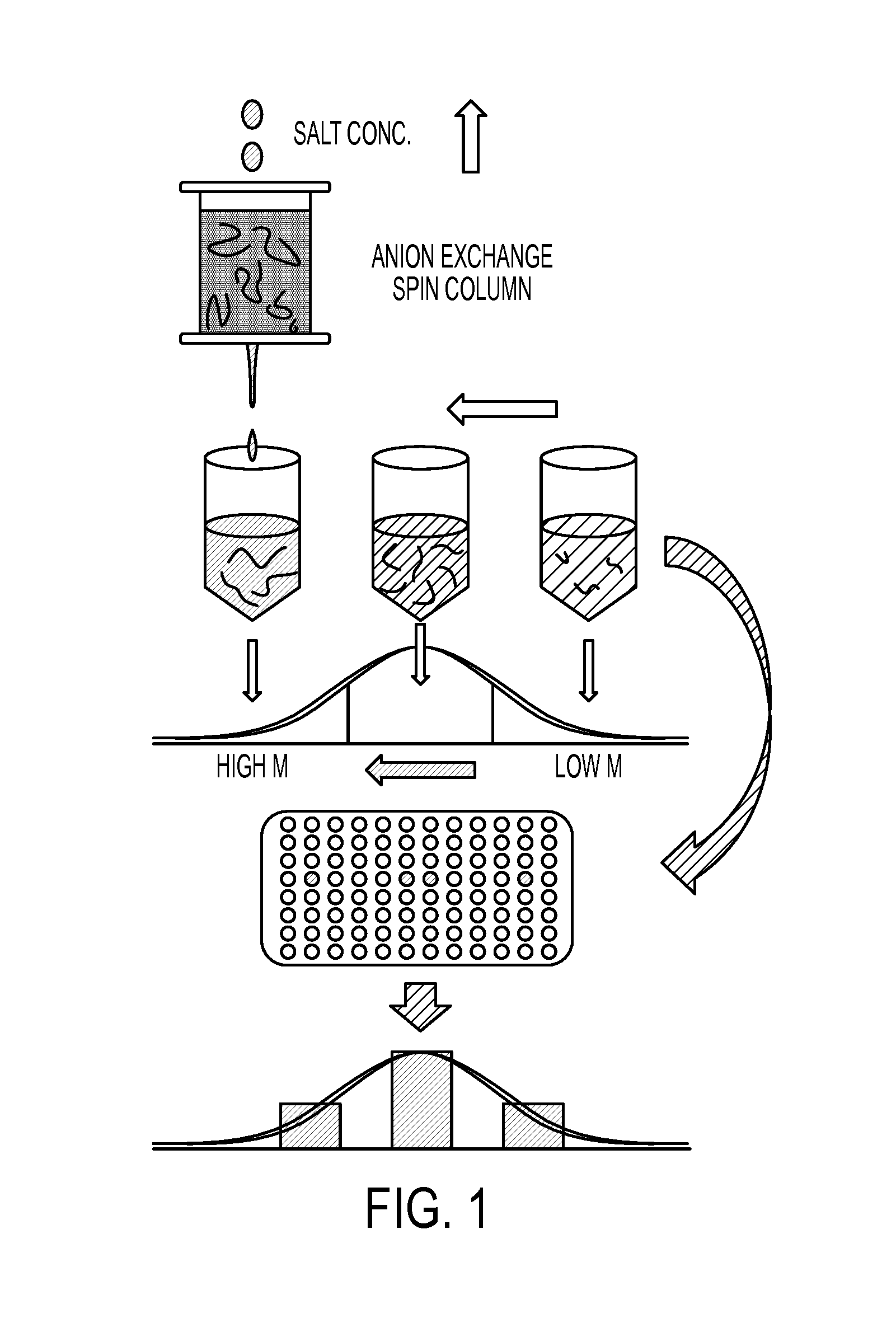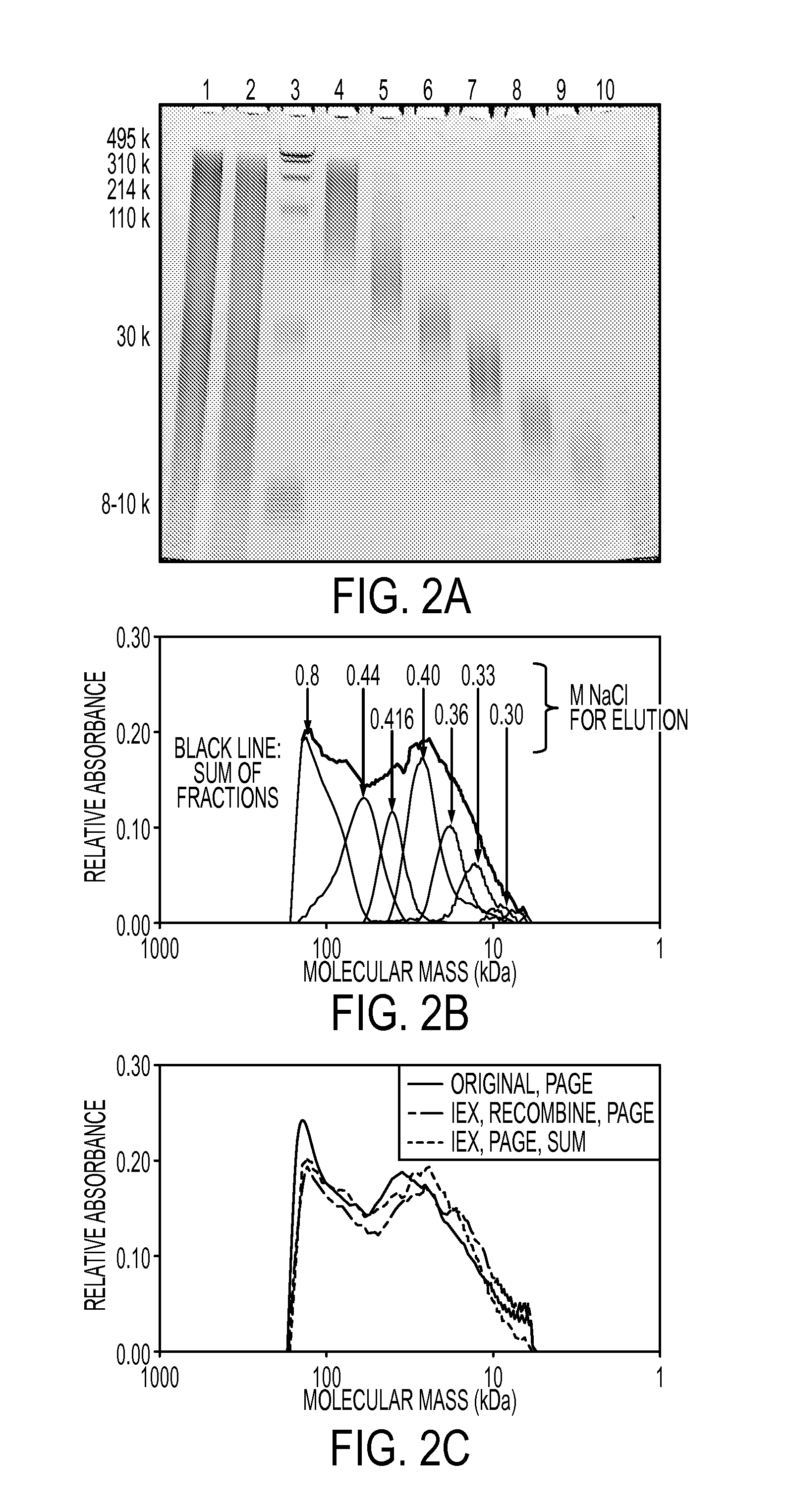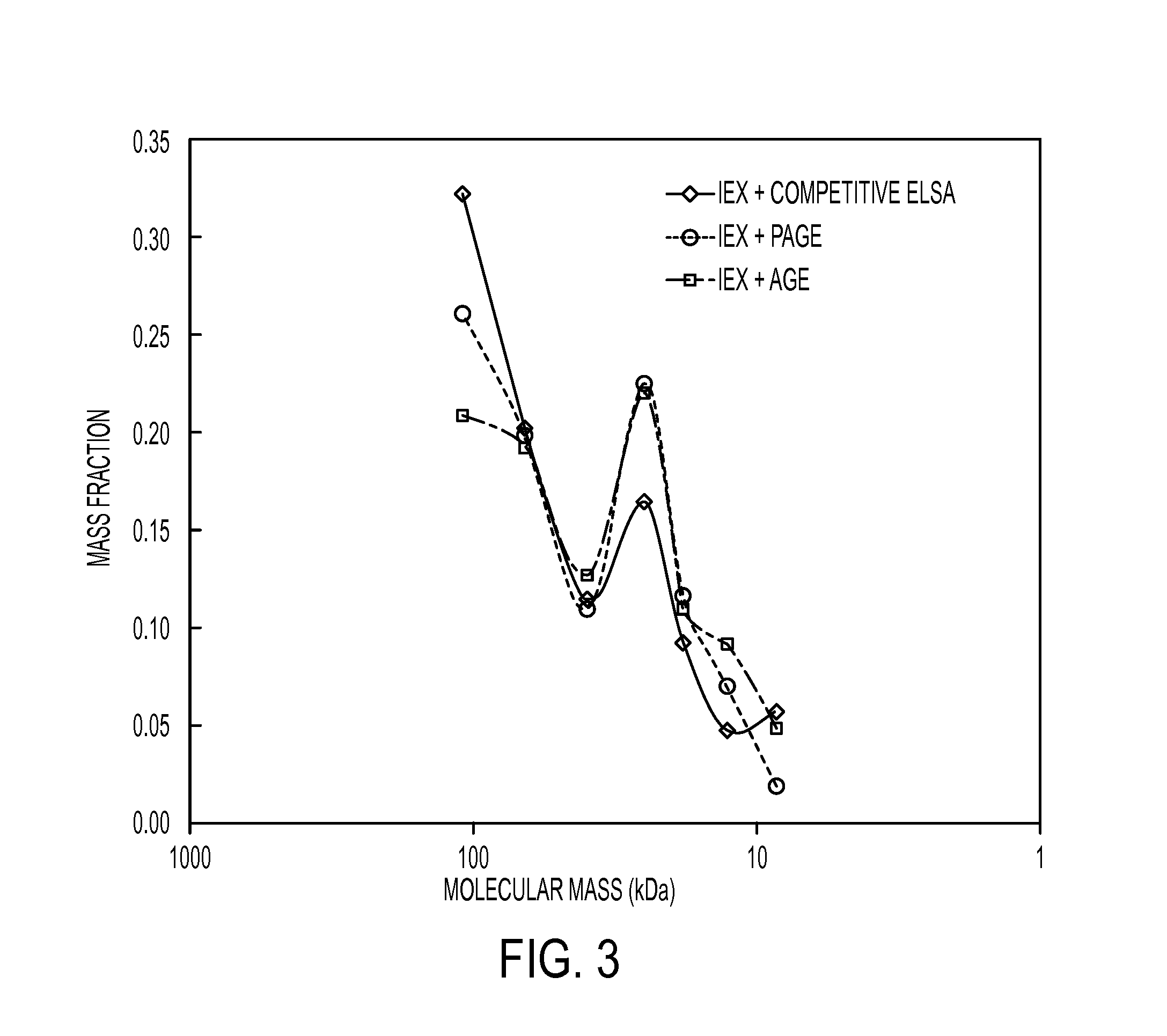Method for separating hyaluronan and quantifying its molecular mass distribution in biological samples
a technology of hyaluronan and molecular mass, applied in the field of size-dependent fractionation and determination of molecular mass (m) distribution of hyaluronan in biological samples, can solve the problems of inability to properly detect ha, and inability to detect ha
- Summary
- Abstract
- Description
- Claims
- Application Information
AI Technical Summary
Benefits of technology
Problems solved by technology
Method used
Image
Examples
example
[0047]To address the issues of limited sample amount, purification difficulty, and the importance of analyzing both high and low M HA simultaneously, a method using size-dependent fractionation of HA by anion exchange on a spin column, and quantification of HA in the fractions using a competitive ELSA assay was developed. HA size analyses were then conducted for samples from 20 different human milk donors to characterize the diversity of HA sizes in milk. Here it is reported that only a small percentage (˜5%) falls in the range of the active commercial HA 35 kDa preparation, and the majority has an average molecular mass of ˜440 kDa.
[0048]Abbreviations Used:
[0049]HA, hyaluronan; M, molecular mass; IEX, ion exchange; ELSA, enzyme linked sorbent assay; HBD2, human beta defensin 2; HMOs, human milk oligosaccharides; MuBD3, murine beta defensin 3; TLR4, toll-like receptor 4; SEC-MALLS, size exclusion chromatography with multiangle laser light scattering; CE, capillary electrophoresis; S...
PUM
| Property | Measurement | Unit |
|---|---|---|
| molecular mass | aaaaa | aaaaa |
| molecular mass | aaaaa | aaaaa |
| molecular mass | aaaaa | aaaaa |
Abstract
Description
Claims
Application Information
 Login to View More
Login to View More - R&D
- Intellectual Property
- Life Sciences
- Materials
- Tech Scout
- Unparalleled Data Quality
- Higher Quality Content
- 60% Fewer Hallucinations
Browse by: Latest US Patents, China's latest patents, Technical Efficacy Thesaurus, Application Domain, Technology Topic, Popular Technical Reports.
© 2025 PatSnap. All rights reserved.Legal|Privacy policy|Modern Slavery Act Transparency Statement|Sitemap|About US| Contact US: help@patsnap.com



